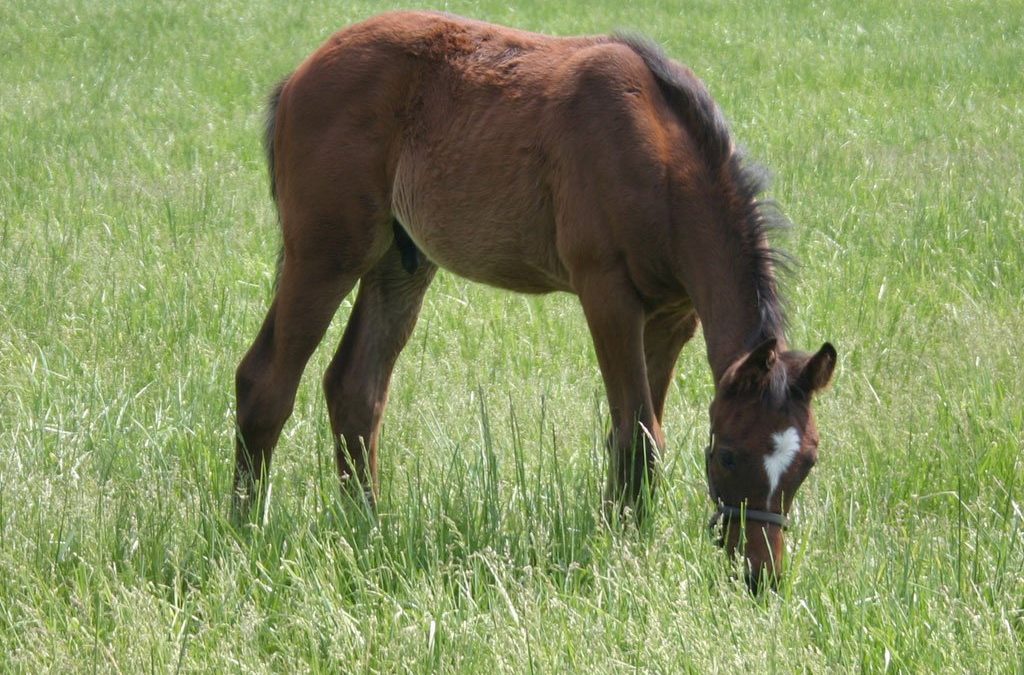Fueling the Motor – Energy Sources for Horses
The energy level of the horse is one of the most commonly analyzed factors of performance. Horses that compete in energy-oriented competitions need the proper amount of fuel to perform at their best. While the main source of energy in feeds for performance horses is carbohydrates, other sources should not be dismissed.
Carbohydrates:
- Carbohydrates can be broken down into two categories: nonstructural (“sugars”), such as those found in grains, and structural, like those found in forages. Here are the differences between the two:
Nonstructural Carbohydrates
- Digested and absorbed directly out of the small intestine as a single molecule of glucose.
- Glucose is a single molecule of carbohydrate, whereas starch from grains contains a long chain of glucose molecules linked together.
- All carbohydrates from the simple to the most complex must be converted into glucose by the body before they can be used for energy
Structural Carbohydrates
- Must first be metabolized by the hindgut bacteria, converted into volatile fatty acids, which are then used by the horse for various biological processes and to make glucose in the liver.
Starch, mentioned above, is the high-energy carbohydrate consumed in feeds and is found in the leaves of young plants and grains. As plants mature, their starch content moves from the leaves into the seed heads where it becomes much more concentrated. Cereal grains such as oats, wheat, barley, and corn, have about 45% to 65% starch content. It is important to remember though starch can also be a source of metabolic upset for horses that are sensitive to large amounts of it in the diet, and can lead to a variety of pathological conditions (insulin resistance, colic, laminitis, Cushing’s disease, etc.) if not well managed.
Cellulose and hemicellulose comprise the fiber or structural portion of forages. They are the main components of the leaves and stems of grasses and hay. Fibers such as beet pulp, rice bran, flax seed, and soybean hulls are being used with much more frequency in performance horse diets because they are energy-dense but are safer to feed than starch.
Glucose is the primary source of energy for the performance horse, but during peak aerobic activity the muscle cells will also use the fatty acids as a fuel source. Fats are a concentrated energy source for animals, providing 2 ½ times as many calories as carbohydrates.
Fats:
Fats are expensive compared with carbohydrates, but the increased energy yield and health benefits of reducing soluble carbohydrate in the performance horse’s diet are worth the extra expense. Also, horses that are adapted to a high level of fat in the diet will burn fat for energy and conserve glycogen longer than a nonfat-adapted horse. Horses that can spare glycogen during a competition will be less fatigued and may have more conserved energy to finish with.
Using fat as a fuel source creates less internal heat as opposed to the digestion and metabolism of carbohydrate-rich grains and protein. Equally as important, fat contributes energy without causing hyperactivity or excessive nervous energy produced from high-carbohydrate diets in horses that are sensitive to increases in blood sugar levels. Essential fatty acids in certain fats also provide the nutrients needed to produce healthy and conditioned hair, skin, and hooves.
Which Source of Energy to Use?
A well-balanced diet is essential for a horse to perform at optimum levels. While choosing an energy source is an important concern, emphasis must be placed on meeting your horse’s nutrient requirements since deficiencies and excesses of key nutrients, such as amino acids, vitamins, minerals, soluble and structural carbohydrates, and fats, will hinder growth, performance, and general well-being. Knowing your horse’s needs, for both performance and overall health, will assist you in generating the proper feeding program, which can then help improve performance.
This blog post was originally posted on Wednesday, December 7th, 2011 at Equine Nutrition and Health Services Blog. Blog article was re-posted with permission from blog owner, all rights reserved.

